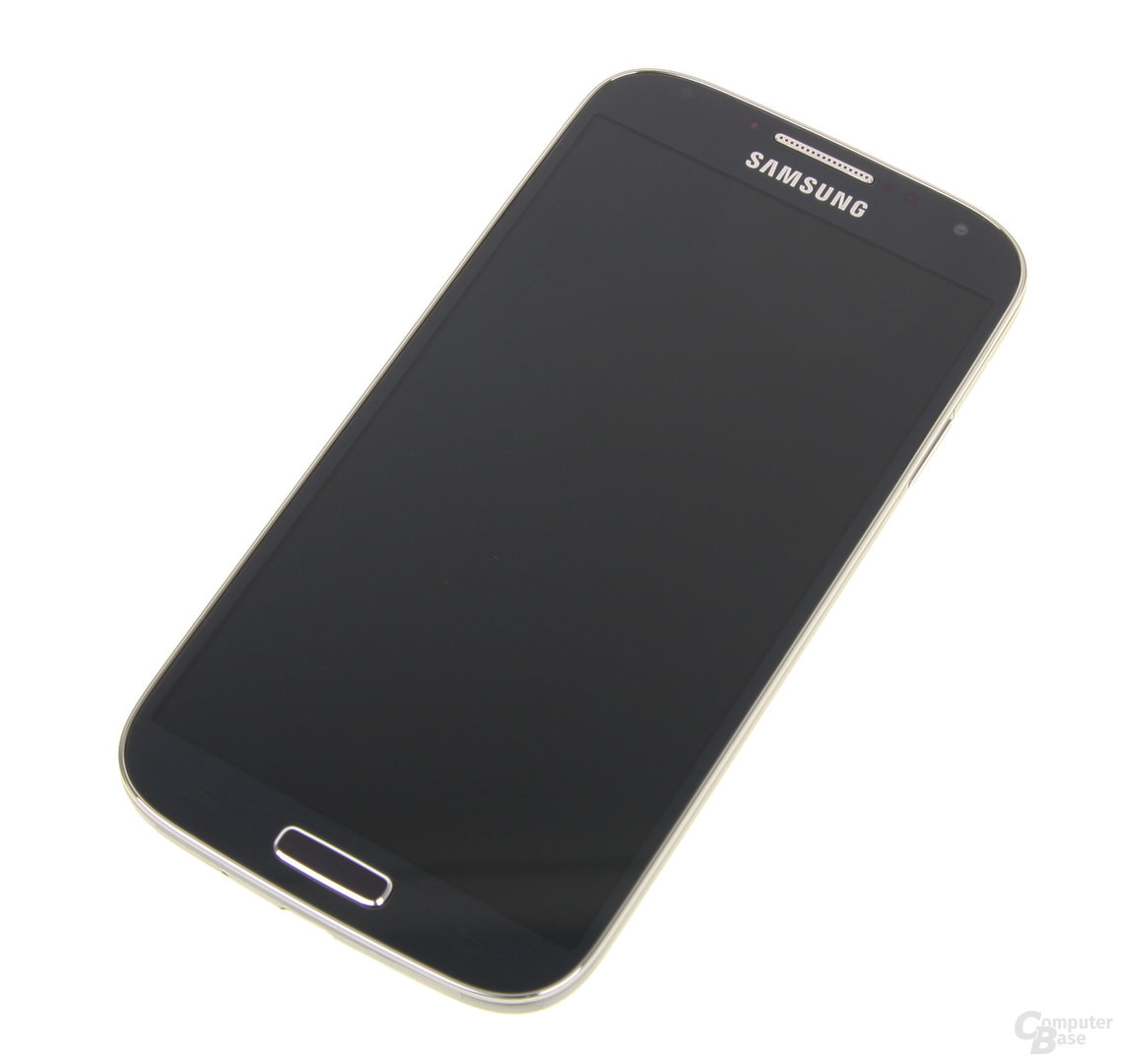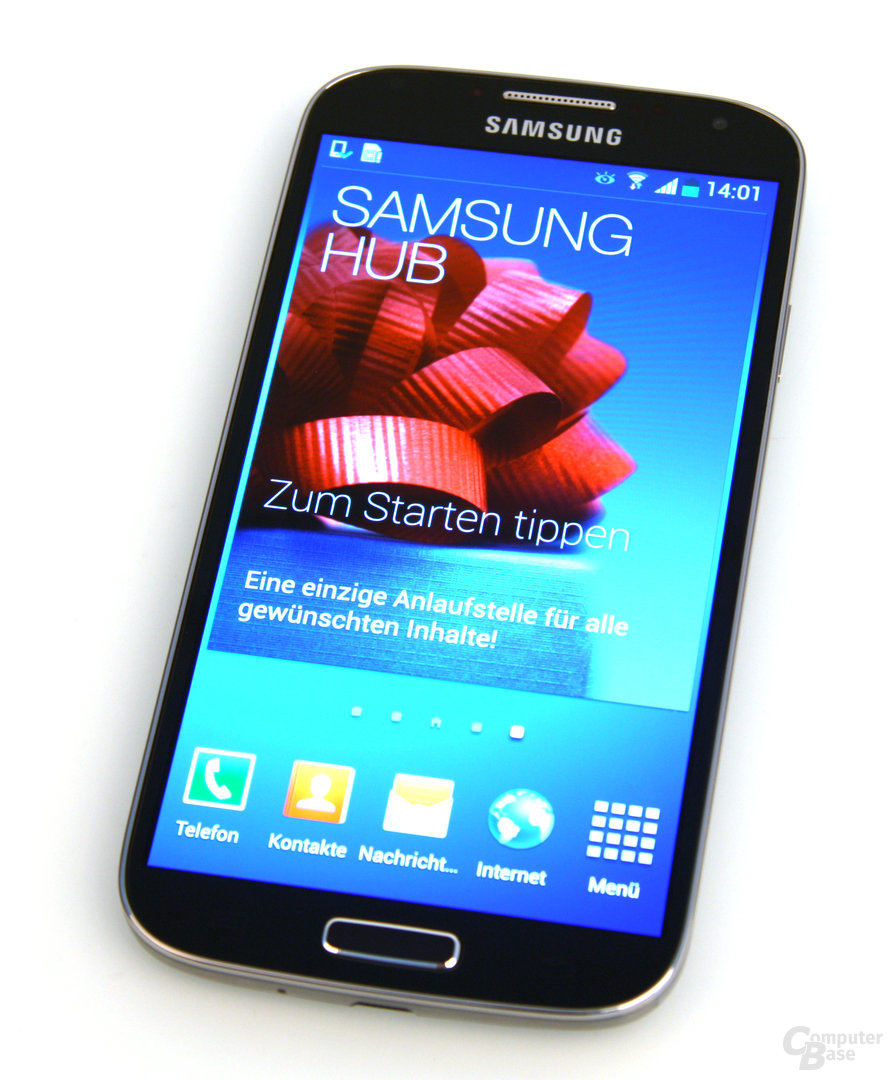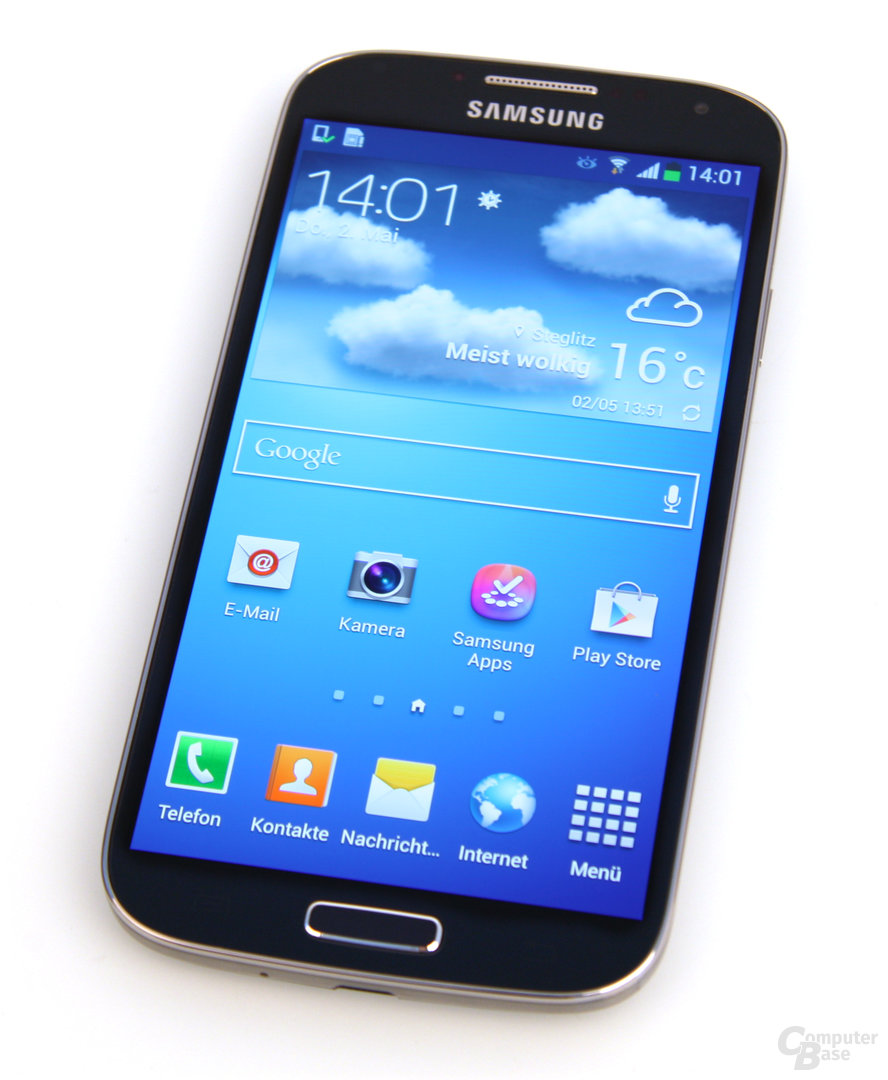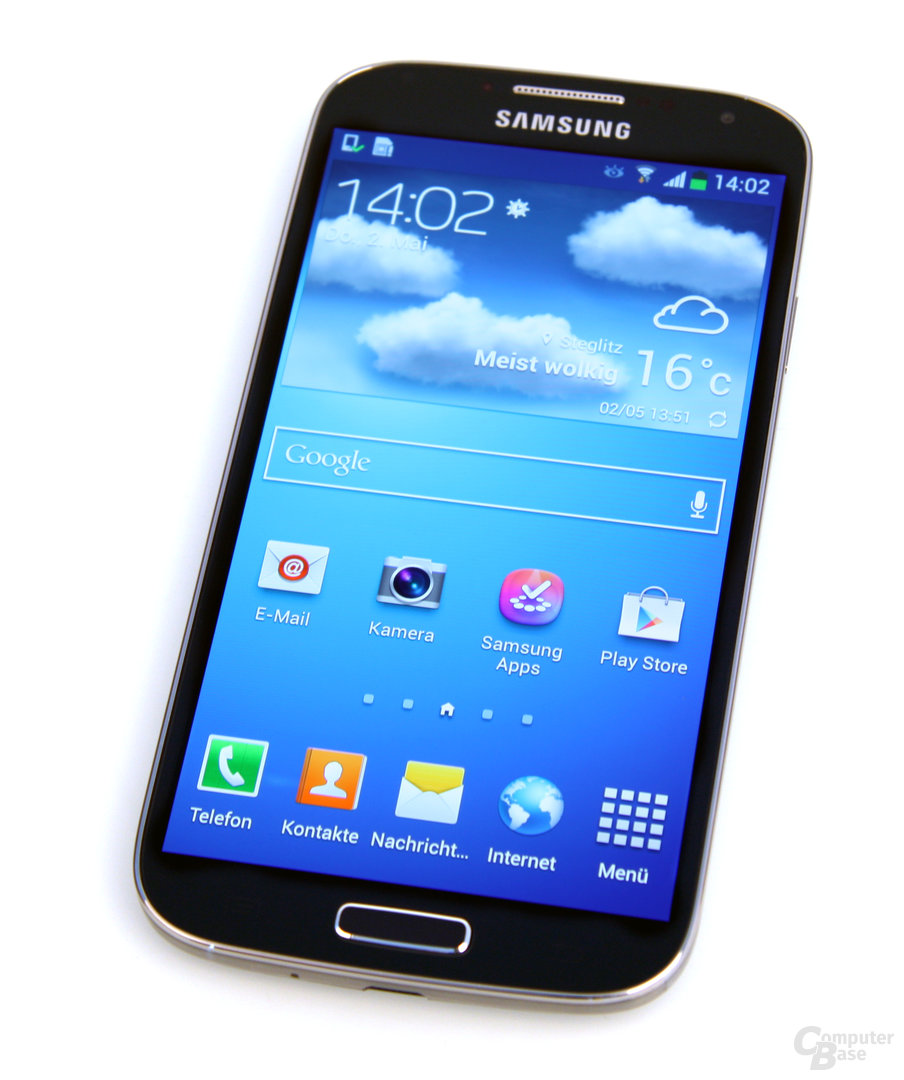Samsung Galaxy S4 im Test: Androider Kraftprotz mit Langläuferqualitäten
3/6Display
Auch wenn Samsung in Bezug auf das Galaxy S4 mit vielen technischen Daten und Schlagwörtern wirbt: Das Highlight ist ganz klar das Display. Denn die Full-HD-Super-AMOLED-Anzeige überzeugt mit einer gestochen scharfen Darstellung und schafft es trotz der zugrunde liegenden OLED-Technik, Farben kräftig aber nicht unnatürlich darzustellen. Mit letzterem hatte die Super-AMOLED-Displays in der Vergangenheit häufiger zu kämpfen, gerade Grün- und Blau-Töne wirkten so oftmals überzogen künstlich.
Dass Samsung erneut auf die sogenannte Pentile Matrix zurückgreifen muss, ist aufgrund der hohen Auflösung in Kombination mit der Diagonalen von fünf Zoll nur mit sehr viel Mühe aus kürzester Entfernung zu erkennen. Im alltäglichen Einsatz fällt diese Beeinträchtigung, die durch die unterschiedlichen Lebenserwartungen der einzelnen Subpixel notwendig wird, weder an Linien noch an anderen feinen Strukturen auf. Theoretische Auswirkungen hat die Subpixel-Struktur auf einen bestimmten Wert: Denn während Samsung die Pixeldichte mit 441 ppi angibt, liegt sie tatsächlich nur bei rund 290 ppi, sofern die Zahl der Subpixel in die Berechnung einfließt. Am sehr guten subjektiven Eindruck ändert aber auch dies nichts.

Allerdings hat das Galaxy S4 mit einem ganz anderen, weniger theoretischen Problem zu kämpfen, das so nicht neu ist. Denn die maximale Helligkeit erreicht das Smartphone wie viele seiner Schwestermodelle nur dann, wenn helle – vor allem weiße – Flächen nicht zu groß ausfallen. Wird ein weißer Bildausschnitt auf Briefmarkengröße verkleinert, erreicht das Galaxy S4 hier eine Helligkeit von rund 300 Candela pro Quadratmeter. Während schon dies ein allenfalls mittelmäßiger Wert ist, verringert er sich bei zunehmender weißer Fläche weiter, so dass bei voller Bildschirmfläche nur 215 Candela pro Quadratmeter geboten werden. In geschlossenen Räumen oder im Schatten reichen beide Werte aus, in helleren Umgebungen erreicht man jedoch schnell die Grenze des Zumutbaren. Immerhin gefällt der praktisch unendliche Kontrast, der auf die OLED-Technik zurückzuführen ist. Mit verschiedenen Voreinstellungen kann dieser an die jeweilige Situation angepasst werden.
Als optimalen Weißpunkt sehen wir D65 an, also eine Farbtemperatur von 6.500 Kelvin (K). Dies entspricht nach gängiger Definition einem mittlerem Tageslicht und ist der Weißpunkt der gängigen Farbräume sRGB und AdobeRGB. Eine Abweichung von einigen hundert bis etwa 1000 K ist bei Mobiltelefonen als noch akzeptabel anzusehen, einige Displays – bauartbedingt vor allem OLED-Modelle – liegen allerdings beim Weiß und noch mehr bei Grautönen oft im Bereich um 10.000 K, was bereits als deutlicher Blaustich wahrnehmbar ist. Sehr viele Displays von Smartphones und Notebooks treffen zwar den Weißpunkt von 6.500 K relativ genau, weichen aber bei Grautönen und anderen mittleren Farbtönen deutlich mit einem Blaustich ab. Vor allem bei gleichzeitigem Auftreten von Grau und Weiß ist diese ungleichmäßige Graubalance wahrnehmbar.
Gegenüber der LCD-Technik weisen OLED-Bildschirme einige Besonderheiten auf, die sich teilweise in unseren Messungen niederschlagen und erklärungsbedürftig sind. Zum einen ist das der bekanntermaßen hohe Kontrast, der bei OLED durch die selbstleuchtenden Pixel möglich ist – es gibt hier kein Backlight, welches durch das Panel mehr oder weniger stark abgedunkelt wird, sondern ein schwarz angesteuerter Pixel ist tatsächlich komplett schwarz und leuchtet nicht. Da das Kontrastverhältnis den Quotienten zwischen der Helligkeit von Weiß und Schwarz angibt, ergibt die Kontrastmessung bei OLED-Displays theoretisch eine Division durch Null und damit ein nicht definiertes Ergebnis – in der Praxis gibt es bei der Schwarzmessung immer eine gewisse Resthelligkeit durch Streulicht und ein Signalrauschen beim Messgerät, sodass Kontrastergebnisse im fünfstelligen Bereich entstehen. Da die Darstellung dieser Kontrastwerte im Balkendiagramm den irreführenden Eindruck erzeugen, der Kontrast wäre bei OLED sichtbar um viele Größenordnungen besser, haben wir uns entschieden als Kontrast maximal 5000:1 darzustellen und auf diese Erklärung zu verweisen. Im Alltag ist der Unterschied allenfalls in sehr dunklen Umgebungen deutlich wahrnehmbar, bei Tageslicht sind Faktoren wie die Reflexionen der Displayoberfläche wesentlich wichtiger.
Die zweite Besonderheit ist die beim derzeitigen Stand der Technik verhältnismäßig geringe Lebensdauer der blauen Leuchtelemente bei OLED-Displays. Dies veranlasst die Hersteller dazu, zur Steigerung der Lebensdauer bei einigen Displays die klassische RGB-Subpixelmatrix durch alternative Anordnungen abzulösen. Bekannt ist dabei beispielsweise Samsungs „PenTile“-Matrix, deren Hauptmerkmal die Vergrößerung der blauen und roten Subpixel ist – allerdings bei gleichzeitiger Halbierung ihrer Anzahl. Das bedeutet, dass bei gleicher Nennauflösung diese Displays eine geringere Anzahl von Subpixeln aufweisen als Displays mit der bewährten RGB-Matrix. Jeder Pixel verfügt weiterhin über seinen eigenen grünen Subpixel, teilt sich aber den jeweiligen roten und blauen Subpixel mit seinem Nachbarpixel. Das ganze führt bei gleicher Nennauflösung zu einer geringeren tatsächlichen Auflösung und an Kontrastkanten zu Farbsäumen, die vor allem die Lesbarkeit von Text deutlich verringern können.



